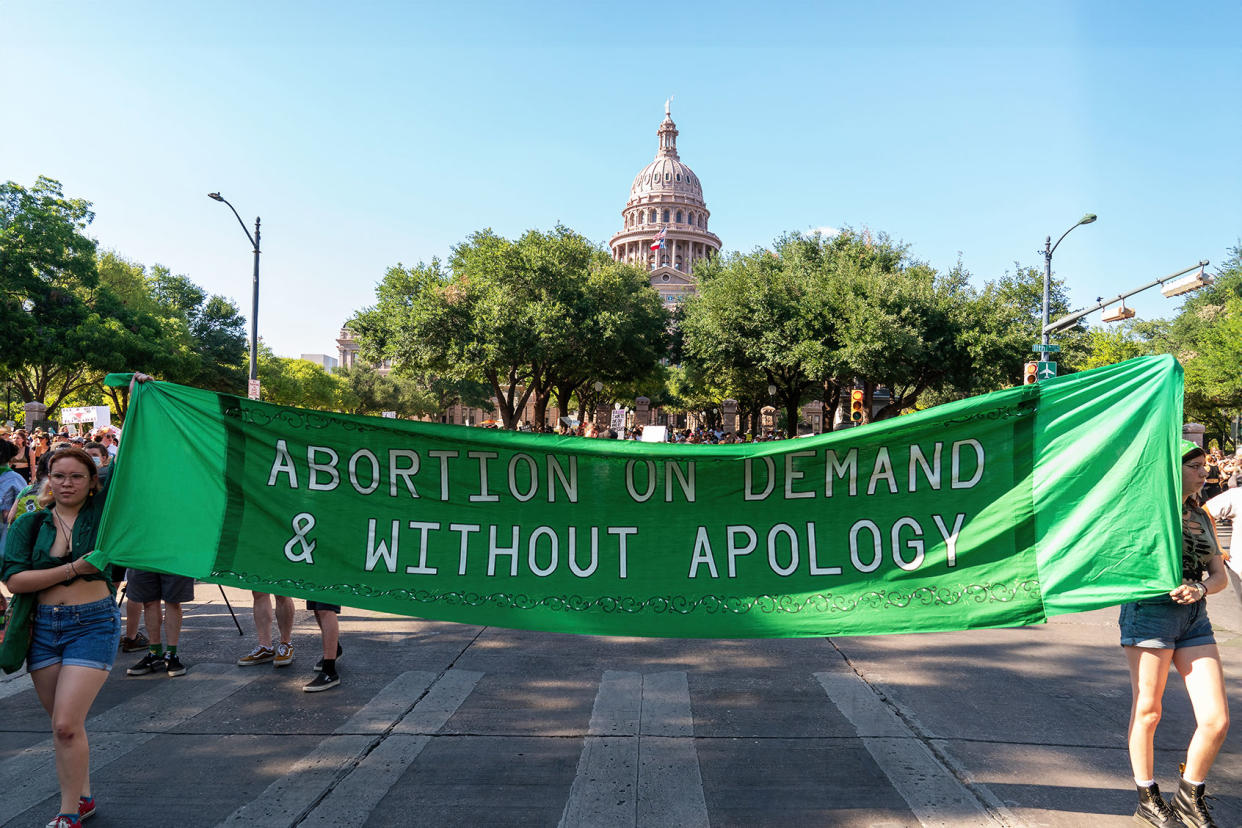"Gut punch": Texas Supreme Court says "life-saving exception" is clear enough. Plaintiffs disagree

Over the last week, 31-year-old Taylor Edwards has had a lot to process emotionally.
Since becoming a plaintiff in Zurawski v. State of Texas, a landmark case that sought to clarify a confusing exception to the state’s abortion laws, she has repeatedly had to relive the worst day of her life.
Her story began when she and her husband happily learned she was pregnant in November 2022 after two years of in vitro fertilization. But at 17 weeks of gestation, the couple found out devastating news at an anatomy scan: her fetus had a fatal condition called encephalocele and would die at or before birth. It causes a sac-like protrusion of brain tissue coming out of an opening in the skull and impacts about 1 in 10,000 babies born in the U.S.
After a confirmed diagnosis, she was told by her doctors that they couldn’t help her if she wanted to terminate the pregnancy. Edwards found a clinic in New Mexico, but three hours before her flight, the clinic canceled due to a shortage of medication needed for the procedure. Taylor was eventually able to obtain an abortion at a Colorado clinic two weeks later. But during those two weeks, she started to get sick and vomit daily. Still, Edwards was unable to access abortion care in Texas because she wasn’t imminently dying.
The experience has had lasting effects emotionally and physically.
“After the procedure, because of my delayed care, my doctor believes that my scarring of my uterus was made much worse,” Edwards told Salon in a phone interview. “And so I had to undergo a procedure to kind of repair the scarring before I could even begin IVF again.”
Edwards gave birth to a healthy boy in March of this year, but her postpartum has been coupled with awaiting the ruling in the lawsuit filed against the state of Texas on behalf of 20 women, including Edwards, who had pregnancy complications, and were denied abortion care as a result of the state’s near-total ban on abortion. The group of plaintiffs argued that the language of the law was ambiguous and that it results in a culture of “fear and uncertainty” among doctors as to when they can legally provide abortions in emergency, life-threatening situations. If physicians violate the law in Texas, they face up to 99 years in prison, loss of their medical license and at least $100,000 in fines.
But last week, the Texas Supreme Court ruled that despite the horrific stories told by plaintiffs, the state’s abortion bans are clear in their exceptions. “Texas law permits a life-saving abortion,” the court wrote. “Under the Human Life Protection Act, a physician may perform an abortion if, exercising reasonable medical judgment, the physician determines that a woman has a life-threatening physical condition that places her at risk of death or serious physical impairment unless an abortion is performed.”
Want more health and science stories in your inbox? Subscribe to Salon's weekly newsletter Lab Notes.
The Texas Supreme Court also said that as “painful as such circumstances are,” referring to fatal fetal anomalies, “the law does not authorize abortions for diagnosed fetal conditions absent a life-threatening complication to the mother does not render it unconstitutional.”
Edwards said after the ruling she is feeling “at a loss” and continually “more upset.”
“How the Supreme Court could hear our stories and our real, lived experiences and decide that no, they were OK with what was happening in Texas,” Edwards said. “That’s been really hard to wrap your brain around because when you go through something super traumatic and you think people would make a change if they know what's happening, and that they are OK with it — it’s really difficult.”
Lead plaintiff Amanda Zurawski was denied abortion care after she experienced preterm prelabor rupture of membranes (PPROM) at 18 weeks of pregnancy. Zurawski ended up in the ICU for days with sepsis after being denied an abortion. In an Instagram video, she said the ruling was a “gut punch” and “heartbreaking.”
“Physicians have been begging to have these statutes interpreted in medical language so that they can understand that they can apply, and that's what the trial court did,” Marc Hearron, counsel for the plaintiff, told Salon in a phone interview. “And the Texas Supreme Court's opinion wiped that away and says, we understand that these exceptions may not be super clear, but there's nothing we can or will do about it.”
The ruling by the Texas Supreme Court did provide clarity and say “an abortion is recommended to prevent a woman’s death or serious bodily injury if she develops preterm pre-labor rupture of membranes (or PPROM).” However, Hearron said, if physicians have to engage in documentation requirements that have been suggested by the Texas Medical Board, he’s skeptical PPROM will be able to be properly treated.
Hearron said he believes Texas is an “outlier” compared to other states that have had similar lawsuits asking to clarify and expand abortion-law exceptions.
“Any time this issue has come up before the highest court in a state, that state has recognized a right under the state constitution to terminate a pregnancy when needed to preserve the patient's life and health, and they read the life exception very broadly,” he said. “We've seen that in Oklahoma, North Dakota and in Indiana.”
Meanwhile, plaintiffs like Edwards have to figure out what the ruling means for their own future. Edwards told Salon she’d like another child, but she’s afraid she won’t be able to access healthcare in Texas. In her last pregnancy, she had preeclampsia at 36 weeks of pregnancy.
“I'm afraid that I won't be able to access health care if my preeclampsia happens before viability or much earlier in the pregnancy,” she said.


